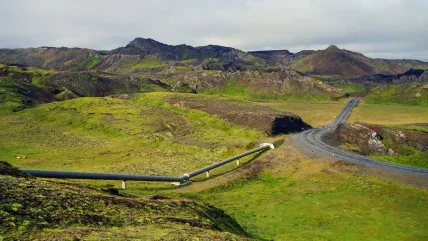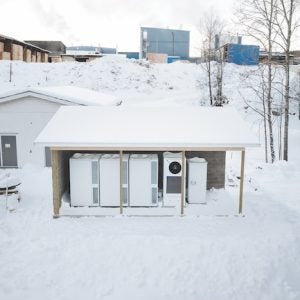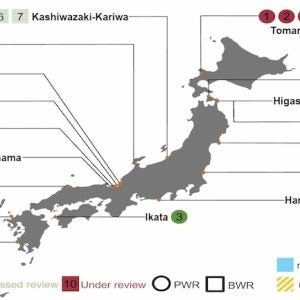
Possibly. A joint study by AFRY and RINA of the Gulf-to-Europe hydrogen pipeline concept points to its “feasibility and attractiveness” and indicates that the project represents “a transformative opportunity to fully unlock the Gulf’s immense potential as a cost-effective source of low-carbon hydrogen for Europe.”
The concept of a hydrogen pipeline connecting Qatar, Saudi Arabia, Egypt, and traversing the Mediterranean Sea to Europe may seem ambitious, says the report – it certainly does – but initial assessment looks promising. The AFRY/ RINA analysis shows that a suitable pipeline configuration could transport 100 TWh or about 2.5 million tonnes of hydrogen annually. Moreover, by constructing additional pipelines of the same nature, the transport capacity could be significantly scaled up.
The cost of transporting hydrogen through this pipeline is initially estimated at about 1.2 EUR/kg H2. The Gulf countries, in turn, could supply green and blue hydrogen to Europe at around 2.7 EUR/ kg LCODH (levelised cost of delivered hydrogen) starting from the 2030s, decreasing to around 2.3 EUR/kg in the longer term.
Recent geopolitical challenges have forced Europe to explore alternative avenues for energy security, including linking the Eastern Mediterranean and Europe by pipeline, which was investigated for the EastMed Natural Gas project. At the same time, the discussion around exporting hydrogen and its synthesis products from the Gulf to Europe is currently revolving around molecule transport by ship. These options receive EU subsidies and drive activity within the gas/hydrogen industry, but they may not be most efficient for bulk transport, says the AFRY/RINA study. “A competitive and actionable pipeline project from the Gulf region in the near future could provide a viable and powerful complement.”
Morocco–UK HVDC link
Developers of the Xlinks HVDC project cannot be accused of lacking ambition either. Remarkably, they have established an HVDC subsea cable manufacturing subsidiary, XLCC, and XLCC has recently secured full planning permission to build the UK’s first HVDC cable factory, in Hunterston, Scotland. XLCC is also working on development of what it describes as the “world’s most sophisticated cable laying vessel.”
Work on the Hunterston manufacturing site is planned to start in early 2024 with cable production slated for 2026.
Demand for high-voltage cables is set to increase six-fold over the next seven years, says XLCC, as “many countries look globally to expand their sources of renewable energy.” XLCC’s first order will be for the four 3800 km long subsea cables to be deployed in the proposed 2 x 1.6 GW Xlinks Morocco–UK power project. XLCC says it has also secured additional MoUs for other HVDC projects.
The Xlinks cables will link PV and wind generation, plus energy storage, located in Morocco’s renewable energy rich region of Guelmim Oued Noun, “exclusively to the UK.”
The project developers say it will deliver 3.6 GW of reliable renewable power for an average of 20+ hours per day and be capable of supplying 8% of GB electricity needs.
Alongside “the consistent output from its solar panels and wind turbines, an onsite 20 GWh/5 GW battery facility will provide sufficient storage to reliably deliver each and every day, a dedicated, near-constant source of flexible and predictable clean energy for Britain,” they assert. “When domestic renewable energy generation in the United Kingdom drops due to low winds and short periods of sun, the project will harvest the benefits of long hours of sun in Morocco alongside the consistency of its convection Trade Winds, to provide a firm but flexible source of zero-carbon electricity.”
Agreement has been reached with National Grid for two 1.8 GW connections in Devon, UK, says Xlinks, and “voltage source converter stations will enable the Xlinks project to secure high value balancing contracts.”
Xlinks has recently asked the UK government to confirm that its plan qualifies as a Nationally Significant Infrastructure Project (NSIP).
NSIPs are major infrastructure projects that require development consent to be granted by the relevant secretary of state through a Development Consent Order. They follow a strict legal process with fixed timescales set out in the Planning Act 2008, which requires projects to carry out public consultation and undergo an independent examination.
Should the government agree that the Xlinks project qualifies as an NSIP, planning permission will be sought from the UK Secretary of State for Energy Security and Net Zero, rather than the local council.






